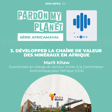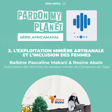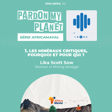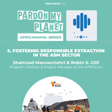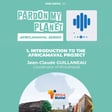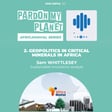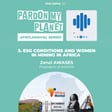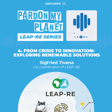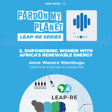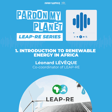
The Principles of Circular Economy
Nearly 110 billion tons. This is the amount of material extracted from Earth in 2024 alone, according to the Global Resources Outlook by the United Nations Environment Program. The stark increase from approximately 30 billion tons in 1970 underlines the accelerating pace of global consumption.
A circular economy is vital for a sustainable future. It challenges the traditional, linear "take-make-waste" model, advocating for a system where resources are reused, repaired and recycled extensively. This method not only reduces waste but ensures that we maximise the utility of materials throughout their lifecycle.
Mathilde Legay, Circular Economy Strategist at LGI, is the guest of this episode’s Pardon My Planet podcast. She brings deep insights into how businesses and individuals can adopt circular practices, and shares innovative strategies that are making significant impacts that contribute to a more sustainable future.
More information on: lgi.earth/podcast
